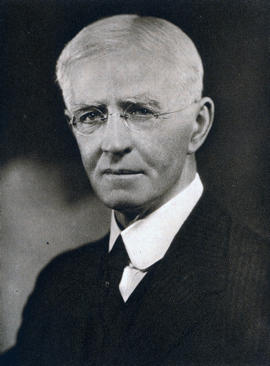Commissionaire at ZSL London Zoo
Temporary Helper at ZSL London Zoo
Prosectorium Boy at ZSL London Zoo
Temporary Labourer at ZSL London Zoo
Housemaid at ZSL London Zoo
Garden Labourer at ZSL London Zoo
Helper in the Isolation Ward at ZSL London Zoo
Temporary Helper at ZSL London Zoo
Son of Philip Lutley Sclater and Jane Anne Eliza, the daughter of Sir David Hunter-Blair. He received his Master of Arts degree in Natural Science from Keble College, Oxford in 1885. He worked for two years as a Demonstrator at Cambridge and went on a collecting trip to British Guiana in 1886. He published about birds in the Ibis in 1887. In the same year he received an appointment as a deputy superintendent of the Indian Museum in Calcutta until 1891 when he joined the science faculty of Eton College. Sclater then took up the position of curator at the South African Museum, During his time in South Africa he continued his scientific writings, including the completion of the work 'Flora and Fauna of South Africa. In 1906, following a dispute with the Museum's board of trustees, Sclater resigned as curator. He travelled through Mombasa, Lake Victoria, Khartoum and Cairo before returning to England. He then moved to Colorado Springs, Colorado, which had been founded by his wife's brother-in-law, General William Jackson Palmer. Palmer offered Sclater a small estate outside the city and a professorship at Colorado College where he helped in reorganising the museum. When the general died in 1909, the couple returned to England.
From 1909 Sclater became curator of the Bird Room at the Natural History Museum. While working there he compiled the 'Systema Avium Aethiopicarum' (1924-1930). He worked there until his death.
In 1912 Sclater published 'A History of the Birds of Colorado' in two volumes. During World War One he volunteered for the Soldiers' and Sailors' Families Association.
Sclater was editor of 'Ibis' from 1913-1930, editor of the Zoological Record from 1921-1937, President of the British Ornithologist's Union from 1928-1933, and Secretary of the Royal Geographical Society 1931-1943. In 1930 he was awarded the Godman-Salvin God Medal. Known mainly for his work with birds, Sclater also described several new species of amphibians and reptiles. Four new species of snake were described by him in a single paper in 1891.
It was at Eton that he met his future wife, Charlotte Mellen Stephenson, an American divorcee whose two sons attended the school. They were married at St George's Cathedral in 1896. Both his stepsons were killed in action during World War One. In 1942 Charlotte died of injuries sustained during the bombing of London. In 1944 Sclater died at St George's Hospital, two days after a bomb fell on his home.
Mitchell was the son of Rev. Alexander Mitchell, a Presbyterian minister in Dunfermline, Scotland, and Marion Chalmers. He gained his MA at the University of Aberdeen, and then went to Christ Church, Oxford, where he read natural sciences, specialising in zoology. After his honours examination in 1888, he was appointed University Demonstrator in Zoology.
In 1911 he delivered the Royal Institution Christmas Lecture on 'The Childhood of Animals'.
In 1896 he was the anonymous author of an article in the Saturday Review entitled 'A Biological View of English Foreign Policy', which proposed the inevitability of a final battle between Britain and Germany, in which one would be destroyed. In February 1915 He gave three lectures on the subject of evolution and foreign policy at the Royal Institution that expanded on his 1896 article. These were combined and published in the form of a book entitled 'Evolution and the War' in May 1915. In April 1916, now an Army Captain, he was made responsible for setting up a specialist department MI7(B)4 to oversee the production of military propaganda to be dropped from the air over enemy lines.
He was Secretary of the Zoological Society of London from 1903-1935, second in length of office to his predecessor Philip Lutley Sclater. Mitchell's brainchild, Whipsnade Zoo, was opened in 1931 on the Dunstable Downs, Bedfordshire. In 1933 he was one of eleven people involved in the appeal which led to the foundation of the British Trust for Ornithology.
On retiring, he moved to Malaga, staying there during the first six months or so of the Spanish Civil War, until the city was taken on behalf of the rebels by Italian troops. An account of his last days in Malaga, including his arrest along with Arthur Koestler, is included in Koestler's book 'Spanish Testament' and in his own memoir 'My House in Malaga', published in 1938.
Mitchell died on 2nd July 1945 after being injured in an accident on 29th June outside London Zoo. After stepping off a bus, he was struck by a taxicab. A species of South American worm lizard, Amphisbaena mitchelli, is named in his honour. He also proved in the treatise 'On the Intestinal Tract of Mammals' that the caecum of mammals is directly homologous with the paired caeca of birds.
